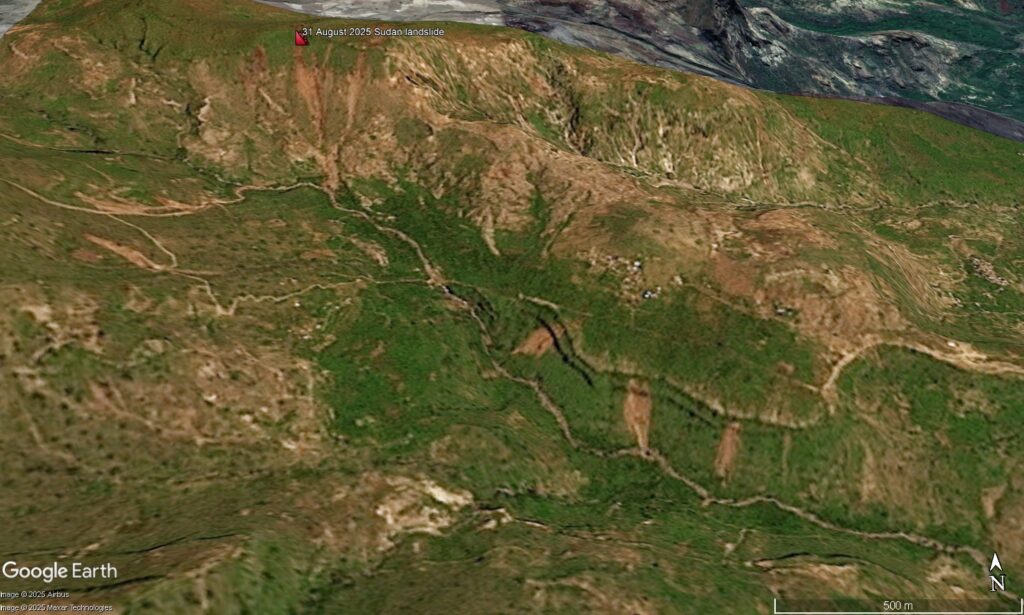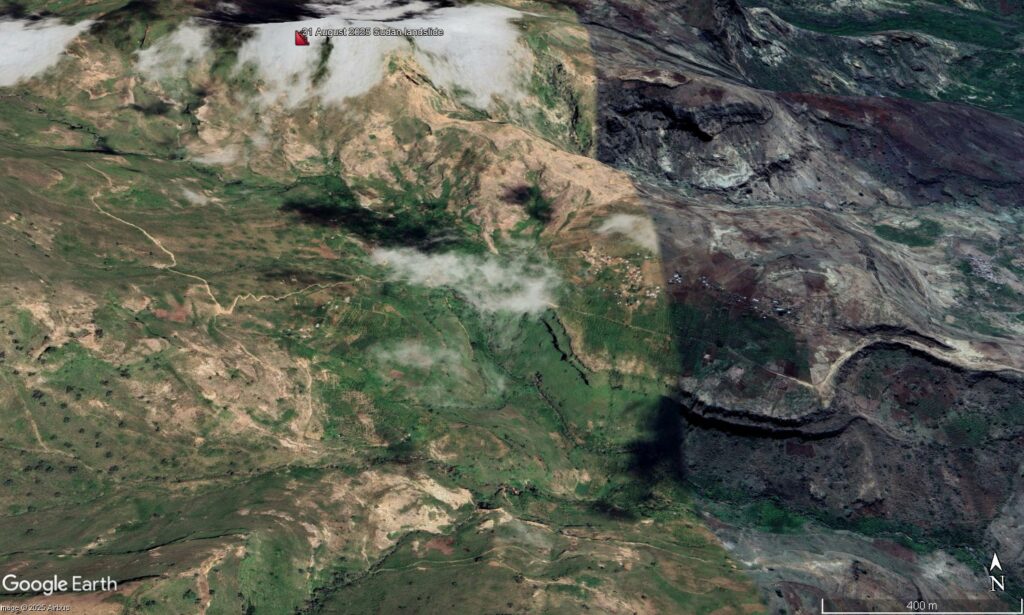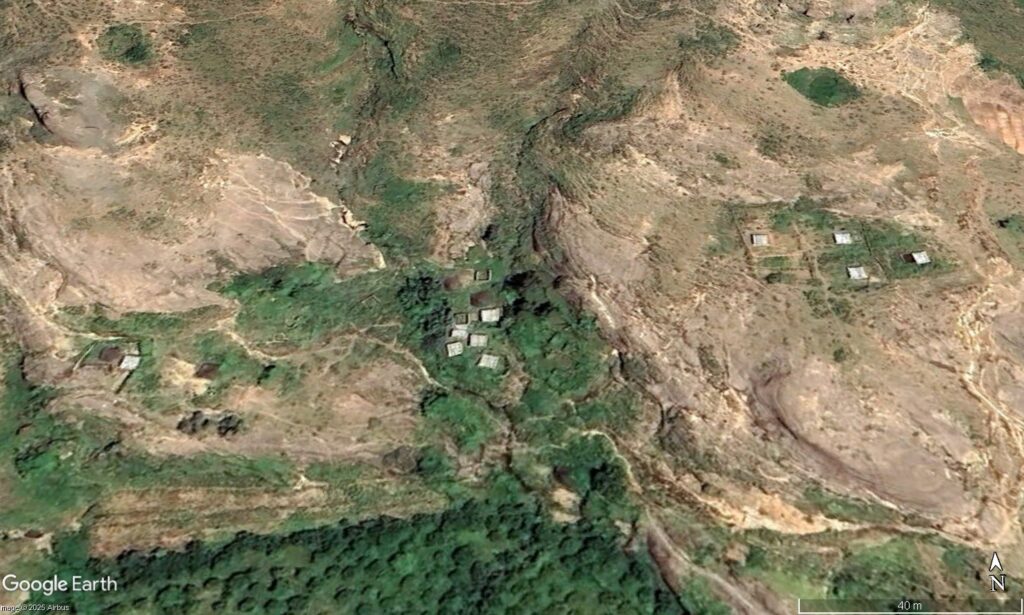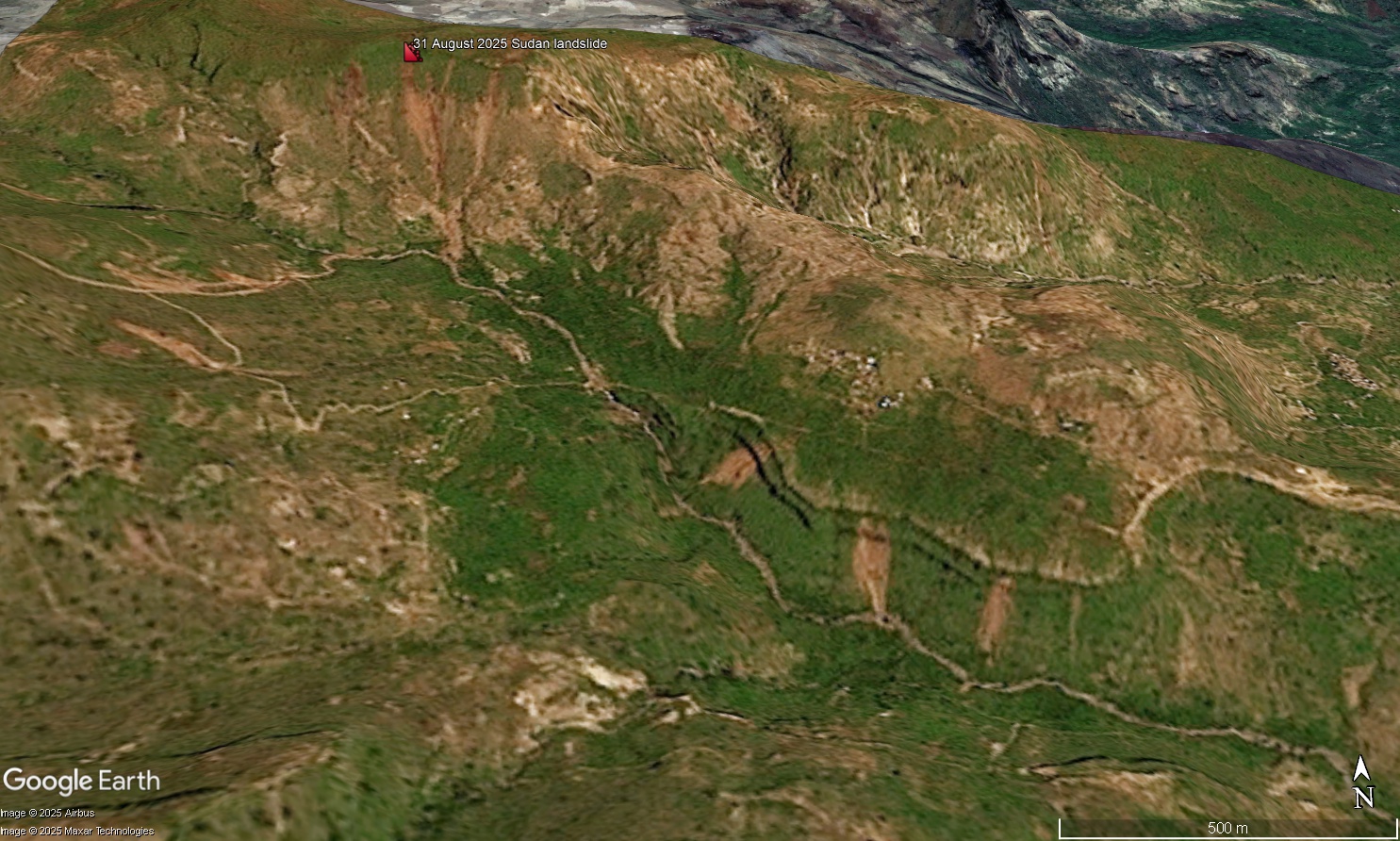Local reports suggested that over 1,500 people died in this event, and a high death toll was reported by some international agencies. However, examination of satellite imagery casts significant doubt on this interpretation.
It has been widely reported that on 31 August 2025, a devastating landslide occurred at Tarasin (there are various spellings of this place) in the Marrah Mountains in Central Darfur, Sudan. Initial reports indicated that 1,000 people had been killed, making this the most deadly landslide of 2025 to date, whilst subsequent reports elevated this number to over 1,500. The reports were given credence by organisations such as Save the Children, who reported that 373 bodies had been recovered. There was only one reported survivor of the disaster.
However, it should also be noted that this very high total was not supported by government reports – noting of course that Sudan has extensive civil conflict, and that this area is not controlled by the government. BBC Verify examined the event too using Maxar satellite data, but could not identify a village that had been destroyed. The Washington Post reported that the United Nations subsequently reduced their estimated total loss of life to “scores”. On Bluesky, Dan Shugar pointed out that the reporting of 1,000 fatalities does not really stack up. The HydrologyNL Bluesky account has also posted some interesting analysis of this event.
The location of this landslide event is [13.01697, 24.38774]. This is a Planet image of the site draped onto the Google Earth DEM:-

The marker highlights the rear scarp of the largest failure, although there are several landslides in the image. These landslides correlate with images from the site posted by news organisations (there are some images of unrelated landslides too, plus some AI slop). It appears that there have been multiple shallow landslides than have transitioned into channelised debris flows.
And this is a Google Earth view, with imagery from 2023 (with some cloud), showing the same area:-

Some local reports of these landslides suggest that 1,500 houses were destroyed, based on information from the Sudan Liberation Movement. However, it is also notable that none of the published photography shows destruction on this scale. And the Google Earth images do not show any large settlements in the path of either the landslides themselves or the channelised debris flows. There is a cluster of houses at the foot of the main failure that has been destroyed:-

However, this is a small number of buildings, not on the reported scale of losses. I have also looked at the Planet imagery from just before the landslide. There is no evidence of a large settlement in this area.
Thus, a reported death toll of 1,000-1,500 seems highly improbable, and the loss of 1,500 houses is not supported by the imagery or photography.
So, what are the possible explanations? We might consider the following:
- The location is wrong – and the reports describe an event somewhere else. I consider this to be low probability, given the images that have been published;
- Dan Shugar suggested that perhaps some sort of social event occurred in the path of the landslide – a wedding or suchlike. But the local reports are of 1,500 houses lost, and in general my experience is that this type of circumstance is reported, given the nature of the tragedy. Again, low probability.
- The losses occurred a long distance down the channel. I cannot find such a site on the imagery, and I would expect that the location would be reported, and that photography would show the devastation. Again, this would seem to be low probaility.
- There is mis-reporting, either accidentally or deliberately. I consider this to be high probability.
In remote areas, we have previously seen vastly inflated estimates of loss of life – a recent example was the 24 May Kaokalam landslide in Papua New Guinea. This can simply be a misunderstanding or the result of rumours. On the other hand, it can be deliberate. For example, loss of life can be inflated to attract additional resource for a population that is suffering extreme poverty, or it can be an attempt by the local forces to attract supplies for their own purposes. Others will be able to judge the most likely explanation.
I’m struggling to understand why reputable international agencies would appear to support these inflated reports, especially where they appear to provide testimony from the site.
Reference
Planet Team 2025. Planet Application Program Interface: In Space for Life on Earth. San Francisco, CA. https://www.planet.com/


